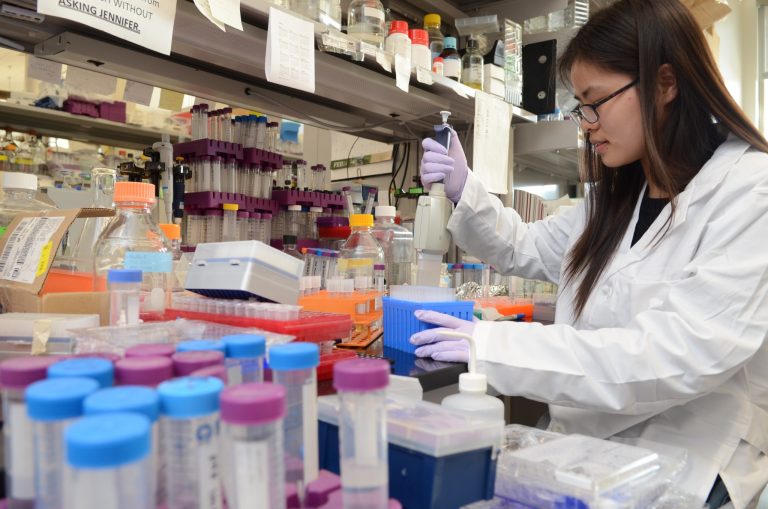
Texas A&M’s College of Agriculture and Life Sciences offers a dynamic and engaging environment in which students from around to the globe can come to be challenged and learn from the best. The College provides world-class facilities, and courses that are taught by faculty whose research is on the cutting-edge. From feeding our world to protecting our environment, to improving our health and enriching our youth, to growing our economy and beyond, the College’s innovations improve people’s lives in the state, the nation and all over the world.
The College is the largest of its kind in the U.S, encompassing 14 academic departments with 29 undergraduate degree programs, as well as more than 70 master’s and doctoral programs – including a number of sought-after interdisciplinary degrees. Wherever your passion lies, Texas A&M’s world-class degrees will help you change the world. Home to numerous research centers and institutes where students can apply what they’ve learned in a stimulating classroom environment, the College helps students contribute to solving some of our biggest global challenges allowing them to build a wealth of expertise that serve them well in the complex professional sphere.
Named for the Nobel Peace Prize recipient and father of the Green Revolution, the Norman Borlaug Institute for International Agriculture has programs that allow researchers, policy makers, and university faculty from Texas A&M, as well as developing countries, to strengthen sustainable production of food, improve nutrition, and create the market chains that will end food insecurity.
As a multidisciplinary organization with a history of ground breaking research, the Institute for Plant Genomics and Biotechnology looks into the development of transgenic plants for disease, stress resistance, and high-value proteins, as well as the platform for biotechnology research in food, fiber, and health.
The Institute of Renewable Natural Resources conducts interdisciplinary research, technology transfer, and policy and economic analysis on a variety of natural resource issues including threatened species, environmental conflict, and resource utilization. It also engages with government, industry, land managers, and policy makers to improve the management of natural resources.
The Institute for Infectious Animal Diseases performs research and develops products to defend the nation from high-consequence foreign animal and zoonotic diseases. This institute focuses on research, education and outreach to prevent, detect, mitigate and recover from exotic animal, emerging and/or zoonotic diseases, which may be introduced intentionally or through natural processes.
The Texas Water Resources Institute is the official water resource institute for Texas providing science based solutions through watershed planning and management, geospatial and hydrologic modeling, bacterial point source tracking, urban water resiliency, policy and economic analysis, and public/municipal outreach.
The National Center for Electron Beam Research, the leading academic and research organization in the world focused on the research, development, and commercialization of electron beam technologies, is the only electron beam housed at a U.S university. High energy electron beams can significantly improve food safety, enhance the quality of therapeutics such as vaccines, eliminate environmental pollution by decontaminating municipal and industrial wastes, improve the durability and quality of medical implants, and improve biofuel and petroleum production efficiencies.
Another unique center only found at Texas A&M is the Center on Conflict and Development. It seeks to improve the effectiveness of development programs and policies for conflict-affected and fragile countries through multidisciplinary research and education. The Center uses science and technology to reduce armed conflict, sustain families and communities during conflict, and assist states to rapidly recover from conflict.
The groundbreaking discoveries made by Texas A&M’s College of Agriculture and Life Sciences state-of-the-art research Institutes and Centers have already improved the lives of millions and graduates are forging meaningful careers in business, industry, government and non-profit organizations around the world. Becoming an active member of this powerful community represents your first step to becoming an agent of crucial and meaningful change in addressing the grand challenges facing the world.
If the College of Agriculture and Life Sciences at Texas A&M is something that interests you, you can find more information here.
Follow the College of Agriculture and Life Sciences on Facebook, Twitter and Instagram
All images courtesy of Texas A&M University
Liked this? Then you’ll love these…
Global leaders in Sustainability, Agriculture and Environmental Sciences
Agriculture is now the fastest growing discipline at UK universities










